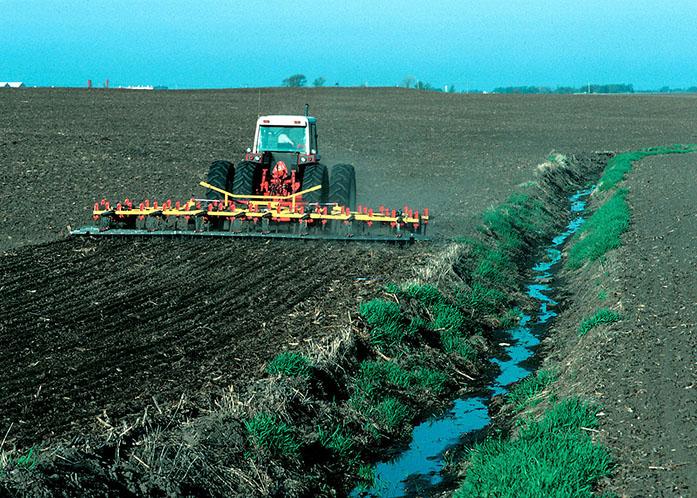Cost-share funds have been established to implement farming practices to protect water quality.
By Katelyn Weisbrod
[email protected]
Farmers are starting to protect not just the land but the rivers and streams that run through it.
The Iowa Department of Agriculture and Land Stewardship allocated $3.5 million in cost-share funds on Aug. 28 for farmers to keep destructive fertilizers out of Iowa’s waters.
The money is going to be used to pay for farming practices that will reduce the runoff of fertilizing nutrients, such as nitrogen and phosphorous. If the nutrients drain off of the field and into bodies of water, it can cause algal blooms that are harmful to humans and reduce water quality.
This is a part of the Iowa’s Water Quality Initiative and the Nutrient Reduction Strategy, which has a goal of reducing nutrient runoff by 45 percent.
Dustin Vande Hoef, the communications director for the Agriculture Department, said more than 1,800 farmers committed to the cost-share initiative, and half of them have never used a nutrient-reduction method before.
“We’re early in the process, so the effort is to get as much on the ground as quickly as possible,” Agriculture Secretary Bill Northey said. “It depends on how much support we get and how much interest we get from farmers, so we’re happy where we’re at, but we have a lot more to do.”
The first-time users will split the cost in half with the government, and each will pay $25 per acre. The farmers who have used a nutrient-reduction method before are given a discounted rate to encourage them to try again. They will pay $15 per acre, and the government will pay the other $35.
“In the long run, most of these folks will be using their own money to pay for the practices,” Northey said. “What we’re doing is encouraging them to try it, and in the future, they will keep using it and pay for it with their own money.”
The funded practices include planting of cover crops, no-till, strip till, or applying a nitrification inhibitor.
Planting cover crops is the most popular method; the farmer plants a different crop after the harvest of the commercial crop. The roots of the cover crop retain the nutrients and hold the soil in place until the next commercial crop is planted.
No-till and strip till keep all or part of the old crop in the soil, and nitrification inhibitors are applied with the fertilizer. All methods help prevent nutrients from leaching out of the soil.
“Keeping nitrogen in the soil is important for farmers economically and for environmental quality,” said Michael Castellano, an associate professor of agronomy at Iowa State University. “There are different methods for different farmers.”
Northey said farmers invest in sustainable practices not only to be ecological but because it saves them money. If farmers can keep nutrients in the soil, they will not have to spend as much when they fertilize in the spring, he said.
“At the end of the day, I don’t care why they’re doing it,” Northey said. “If they’re doing it, they’re doing something good for water quality.”







